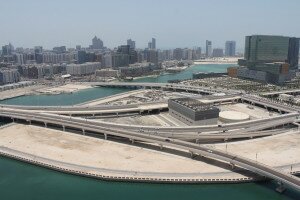We speak to Lukman Hajje, chief commercial officer at propertyfinder.ae, to find out about current trends in the real estate market from the most sought after residential areas to average prices
Over the past few years, Abu Dhabi has made its mark in the region as one of the world’s fastest emerging real estate markets. The capital offers a wide array of investment opportunities for the discerning investor, with endless options ranging from breath-taking beachfront properties on the stunning Nurai Island to exclusive residences featuring spectacular views of the Arabian Gulf.
The city is also becoming a much sought-after tourism destination, as hotels and hotel apartments in Abu Dhabi have reported their best half-year performance ever in 2014. According to latest figures from Abu Dhabi Tourism & Culture Authority, over 1.7 million guests checked into the capital’s hotels and hotel apartments during the first half of this year, a 28 per cent year-on-year growth.
If you are considering moving to the capital or dipping your toes in Abu Dhabi’s real estate market, here are some useful figures.
propertyfinder.ae’s Q2 report, an indicator of how advertised prices and rents are trending based on the for-sale homes and rentals listed on the website, highlighted the top communities that visitors to our site were looking at for purchase and rent in Abu Dhabi. Al Reem Island was the highest ranking, followed by Al Reef and Al Raha Beach for buying real estate.
A modern district popular with expats, Al Reem offers a high-quality lifestyle, enabling residents to remain well connected to the heart of the city while enjoying a secluded location. The area has seen huge investment in recent years.
Based on our findings, buyers can expect to pay an average of AED 1,425 per ft2 for an apartment and AED 1,328 per ft2 for a villa in the capital. In Al Reem Island, for instance, the average advertised price per ft2 of a studio stands at AED 1,429 while that of a one-bedroom apartment averages around AED 1,487 and AED 1,476 for a two-bedroom.
Prices in Al Reef, a neighbourhood just ten minutes away from the city, on the other hand, are slightly lower, with studios going at AED 1,325 per ft2, one-bedroom units at AED 918 and two-bedroom apartments at AED 908 per ft2.
Built alongside 5.2 million m2 of natural beach front, Al Raha Beach properties are more expensive with one-bedroom units available at AED 1,633 and two-bedroom units at AED 1,554 per ft2. One community that has also risen in popularity is Mohammed bin Zayed City, making its first entry into the top 10 trending areas in Q2.
For those looking to rent, Al Reem was also the most searched rental community in Q2, followed by Khalifa City and Al Reef. On average, the cost per ft2 annually to rent an apartment currently stands at AED 99 and a villa at AED 68. Based on these figures, the effects of the removal of the rental cap in Abu Dhabi have yet to be made clear.
While the 2013 housing market was all about recovery – prices were on the rise and the confidence of contractors and investors was also on the upswing – 2014 has been focused on market regulation.
Bearing in mind that Abu Dhabi is also home to several high-end infrastructure projects, such as Abu Dhabi Airport’s Midfield Terminal Building and Etihad Rail, as well as developments on Saadiyat Island, these projects are contributing to the expansion of communities, which may in turn become a factor in the increase in property prices.
To support in regulating the market, Aldar Properties, who recently announced three residential projects with a combined value of AED 5 billion, have been introducing strict resale restrictions on their latest projects preventing buyers from selling units until they have paid 50 per cent of the purchase price.
As Abu Dhabi continues to flourish, we look forward to seeing the launch of the capital’s planned rental index, which would divide the city into 10 to 12 zones, and certainly help in creating a more transparent market for investors, landlords and renters.























